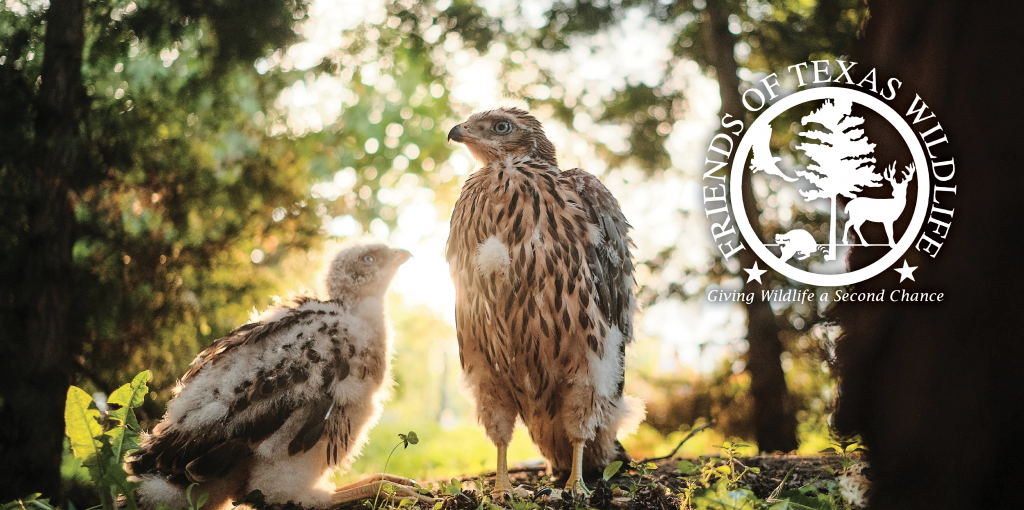Raptor Rescue & Restraint
As a wildlife rehabilitation organization, we often get calls from people who have come across injured birds of prey. As rehabbers are generally unable to pick animals up (most of them have full-time jobs as well as their volunteer work rehabbing), and Game Wardens are often unavailable to assist, it can be somewhat intimidating for the average person to consider rescuing and transporting such a large bird of prey. This month’s article will focus on the safest way to transport an injured raptor.
There can be many reasons why a hawk or owl might be grounded and unable to fly. The most common reasons we tend to see would be animals that have been hit by a vehicle; have struck a window; are emaciated or weak from some type of toxicity; or hatchling or nestling raptors that are not yet able to fly. The safest way to assess if the animal needs assistance would be to slowly approach the bird to see if it can fly off or not (bear in mind that a hawk or owl that has captured prey may also be observed on the ground while it feeds; these raptors will often spread their wings and kind of “hover” over prey in an attempt to guard it. If that is the case, simply leave the bird alone). A raptor that is down and cannot fly will often back away, spread its wings out to the side, and often as a last resort they will throw themselves on their back with their feet and talons up in the air (kind of as a last resort to try to defend themselves). Also, any hawk or owl that is observed laying on the ground, lethargic, and either with its feet tucked or especially on its side, should be investigated as this is generally not normal behavior (there are some species of raptors that may nest on the ground, but these birds show some signs of movement and alertness if they are approached. These birds do not need assistance). Nestling or hatching raptors would look fluffy and have minimal flight feathers. For these birds, it may be possible to re-nest them or put up a makeshift, artificial nest, so always call a rehabber or wildlife center before intervening.
If you do an initial assessment and determine that you have come upon a bird of prey that needs rescuing, you will need to do some quick preparation to keep things as safe as possible for both the bird and you. Gather up the following: a large box, bin, or pet carrier; garden gloves; and a large towel or small blanket. Wearing the gloves, approach the downed bird as closely as possible and place the towel or blanket over the top of the bird (remember, it may throw itself on its back; this is helpful as it will grab onto the cloth with its talons). Gather up the bird and the towel/blanket and place the entire bundle into the prepared box or pet carrier; don’t worry about unwrapping the bird (they will generally figure that out on their own anyway). For very lethargic birds, you can uncover the head if that can be safely done. Do not attempt to give the bird any food or water, but do keep the animal in a warm, quiet spot until you can transport it to a rehab facility. Covering the box or carrier with another blanket or towel can also do a lot to reduce stress on the bird, as well as speaking as little as possible. This technique has been used by kindhearted rescuers hundreds of times, in our experience, and it has been safely done for both the animal and the rescuer.
To learn more about what we do and view pictures of many of the animals we assist, please visit our Facebook page at www.facebook.com/SavingTexasWildlife. Details and more specifies-specific flowcharts regarding how to help found animals can be viewed on our website at www.ftwl.org (click on “Help and Advice”). These charts are extremely helpful to determine if an animal truly needs rescuing or not. If you need assistance with a wildlife animal you have found, please call us at 281-259-0039 or email us at ftwl.help@gmail.com. We offer many educational programs (including camps, birthday parties, educational presentations, and Second Saturdays).
In 2023, we will be offering day camps during Spring Break as well as several sessions of summer camp. Additionally, our educational visitor’s center is open the second Saturday of each month from 10 a.m. to 2 p.m., located at 29816 Dobbin Hufsmith Road, Magnolia, Texas. Our next Second Saturday will be on March 11 ($5 per person, kids three and under are free), and our Spring Break Discovery Days are scheduled for March 13 (reptiles); March 15 (birds/raptors) and March 17 (mammals).
